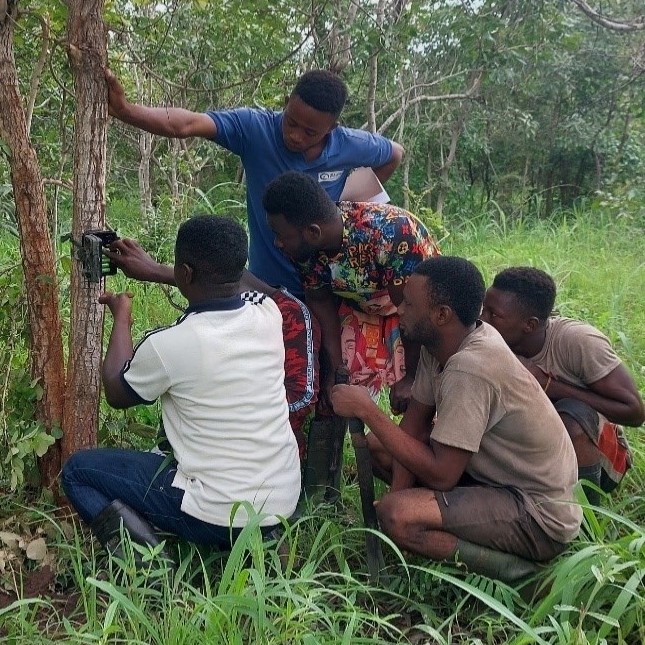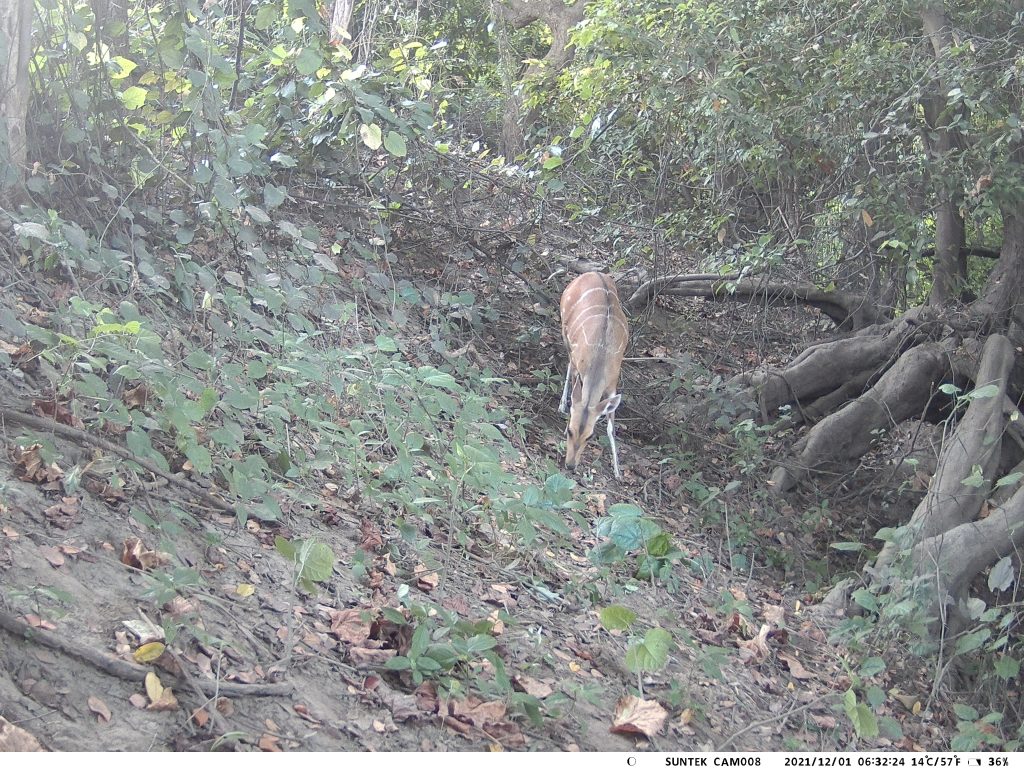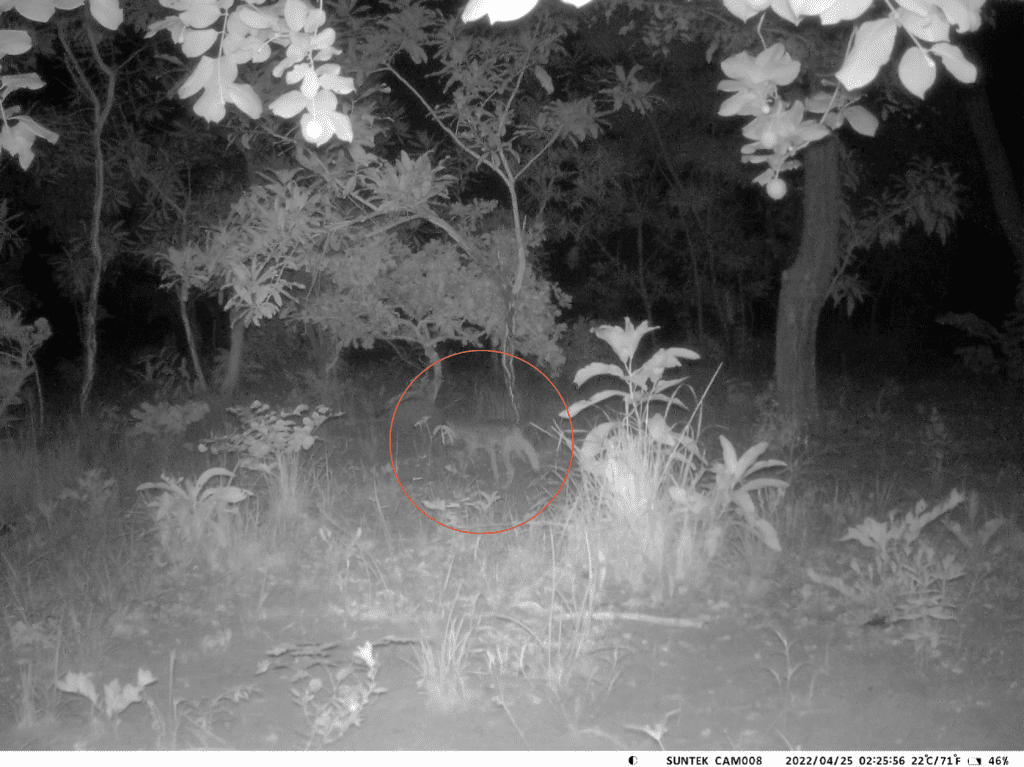Land Acquisition Fund ambassador Arjan Dwarshuis supports nature
16 December, 2024
Tuesday 03 january 2023
Header photo: Patrollers from Gurubagu community exploring a biodiversity monitoring app © A Rocha Ghana
Written in cooperation with Godwin Evenyo Dzekoto and Jan Kamstra.
In Ghana’s transitional zone, between the central and northern part of the country, and the savannah eco zone in which the ecosystem is very fragile, there is a lot of pressure on natural resources. The two zones serve as the hub of charcoal production that supplies the wood energy needs of the entire nation.
Over the past decade, the exploitation of timber species such as rosewood has further deepened the wound. These activities are carried out without the necessary sustainability measures in place to ensure its effects are mitigated. Therefore, without setting up good monitoring protocols, it becomes impossible to take proper stock, assess risks, shocks, threats and opportunities of biodiversity within the landscape. Biodiversity monitoring serves as a critical management tool for effective decision making.
It enables the organisations working in the tropical dry forest to develop solutions to prevent degradation and promote restoration. ‘Early detection of these trends allows us to adapt to them and incorporate the changes in the way we manage the forest,’ says Godwin Evenyo Dzekoto of A Rocha Ghana, one of our partners in the project.
Biodiversity monitoring encompasses an assessment of groups of various species and the systems in which they occur over time. Monitoring of biodiversity assists to ascertain the impact of drivers and causes of changes in the ecosystem. It also analyses the processes and mechanisms of change and predicts future occurrences.
In the Mole landscape, local communities that are organised in Community Resource Management Areas (CREMAs) play an important role in managing their natural resources. The CREMA is a legal framework in which local communities have responsibility for managing natural resources. CREMAs function as buffer zones around areas with important biodiversity, such as national parks.
The sustainable management of natural resources based on evidence can only be generated from information which is collected through monitoring. Each CREMA has a Community Resource Monitoring Unit (CRMU) composed of fixed volunteers who lead the monitoring efforts. During the monitoring, data gets collected on among others animal sightings, illegal activities, and events such as fires or floods. In this set-up, the communities do not only lead the monitoring, but also decide to a large extent where and what should be monitored, guided by A Rocha Ghana and Mole National Park.

The Community Resources Monitoring Units (CRMU) in the Mole Ecological Landscape previously used a special data collection sheet for biodiversity monitoring. It was, however, a challenge to monitor in this way because the sheets were bulky and the system left room for error, as collected data had to be entered manually for digital storage. It was also difficult to verify if the patrollers truly were on the field to conduct monitoring activities.
To improve the biodiversity monitoring system, a more integrated approach was adopted. This saw the introduction of a digitized data collection system through a user-friendly mobile app called Open Data Kit (ODK). Additionally, other monitoring tools were added to complement each other and trial the different tools. These included the use of the ‘Event book’, a paper based tool adopted from Namibia, where it is successfully used by communities that manage ‘hunting zones’, a drone and camera traps. Trainings were provided to CRMUs to provide them with necessary skills.
The adoption of the integrated monitoring approach is a ground-breaking regime for the communities. The Patrollers are enthused to use the Event book and the app. Data collected so far present a good capturing of wildlife which hitherto, communities perceived to be unavailable or far away from the community. This brings some sign of motivation as they strive to put areas under restoration.




In the long run, the monitoring allows the CREMAs, A Rocha Ghana and management of Mole National Park to establish biodiversity data in an off-reserve habitat adjacent to Mole National Park. Communities are the ones who do most of the data analysis and will thus be able to have a better sense of what is going on in their area. Based on the changes they see in their area, they can make changes in the way they manage it.
Gathering and analyzing data puts communities in a stronger position when engaging with stakeholders. This also enhances inclusiveness and participatory natural resource management around Mole National Park as it enables CRMUs to join organized patrols with the park rangers and give communities the position of informants.
However, this inclusive approach to biodiversity monitoring is not without challenges. ‘Sometimes, the monitoring was hindered by natural conditions, for example we experienced serious floods which meant the camera traps had to be unmounted earlier than planned to avoid destruction. This reduced the capture of data,’ Dzekoto explains. More worryingly, there is evidence that some CRMUs are not recording certain pressures on biodiversity, such as charcoal production and illegal logging. This could be because they do not want to report their friends or neighbors, or in some cases because they might fear their safety. ‘We also encountered other challenges such as inaccurate recording and poor handling of equipment,’ Dzekoto adds.
The first data collected shows that the project is working towards a more rigorous biodiversity monitoring system within the CREMAs. Dzekoto: ‘The adoption of the complimentary monitoring approach has helped to provide adequate information on the landscape dynamics and the pressures on biodiversity. It has also provided a clear indication of the presence of indicative as well as rare and threatened species in the communities. Efforts geared towards community appreciation of this data is important to sustain the momentum and also to support them to record data without fear of the repercussions.’
The successful collection of new information through the new monitoring approach is an indication that the CREMAs still fulfill an important role for biodiversity.

